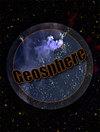The Cretaceous-Paleogene contact in the Tornillo Group of Big Bend National Park, West Texas, USA
IF 1.7
3区 地球科学
Q3 GEOSCIENCES, MULTIDISCIPLINARY
引用次数: 0
Abstract
The Cretaceous-Paleogene (K-Pg) contact interval is constrained by vertebrate fossil sites at seven sites in the Tornillo Group and lies within an 80–100-m stratigraphic section between the top of the Javelina Formation and the base of the “log jam sandstone” marker bed in the Black Peaks Formation. In western exposures of this interval, the highest occurrence of in situ dinosaur specimens and the lowest occurrence of Paleocene mammal specimens are separated by an unusual conglomerate bed. This thin conglomerate bed coincides with the contact between Cretaceous and Paleogene strata and contains reworked Cretaceous fossils. It is superficially similar to conglomerate beds elsewhere attributed to the effects of tsunamis generated by the Chicxulub impact; however, the maximum depositional age of ca. 63 Ma based on detrital zircons indicates that the conglomerate was deposited about three million years after the K-Pg boundary event. Paleocene mammalian fossils from immediately above the conglomerate bed represent a fauna that can be no older than the middle Torrejonian (To2 interval zone). The contact between Cretaceous and Paleocene strata is therefore disconformal and represents a hiatus of at least three million years. A condensed section occurs at the westernmost exposure of the K-Pg contact, where at least 80 m of strata are absent below the conglomerate bed; these strata are present in exposures farther east. This condensed section likely records an erosional event resulting from uplift and deformation of the nearby Terlingua monocline. Although the 80 m of strata below the conglomerate bed are poorly fossiliferous, several clearly in situ dinosaur specimens indicate that this entire interval is Late Cretaceous in age. There is no compelling evidence for preservation of the K-Pg boundary event horizon at any of the seven sites in the Tornillo Group, and so the hiatus represented at the Cretaceous/ Paleocene contact here likely also includes some part of latest Cretaceous time. Mammalian specimens from sites in the “log jam sandstone,” ~40 m above the middle Torrejonian sites, represent an early Tiffanian fauna (Ti1 interval zone). Latest Torrejonian (To3) sites have not been recognized, and therefore a second disconformity likely coincides with the base of the “log jam sandstone” marker horizon in the Black Peaks Formation.美国得克萨斯州西部大弯国家公园托尼洛群白垩纪-古近系接触
白垩纪-古近系(K-Pg)接触层段受Tornillo群七个地点脊椎动物化石遗址的限制,位于Javelina组顶部和Black Peaks组“原木堵塞砂岩”标志层底部之间的80–100-m地层剖面内。在该层段的西部暴露中,原位恐龙标本的最高出现率和古新世哺乳动物标本的最低出现率被一个不寻常的砾岩层隔开。这个薄砾岩层与白垩纪和古近系地层之间的接触相吻合,包含改造后的白垩纪化石。从表面上看,它与其他地方的砾岩层相似,这些砾岩层被认为是希克苏鲁伯撞击产生的海啸的影响;然而,基于碎屑锆石的最大沉积年龄约为63Ma,表明该砾岩是在K-Pg边界事件后约三百万年沉积的。砾岩层正上方的古新世哺乳动物化石代表了一种动物群,其年龄不可能超过托雷约阶中期(To2间隔带)。因此,白垩纪和古新世地层之间的接触是不连续的,代表着至少300万年的间断。浓缩段出现在K-Pg接触的最西部暴露处,砾岩层下方至少有80m的地层不存在;这些地层存在于更远的东部。该浓缩剖面可能记录了由附近的特林古阿单斜构造的抬升和变形引起的侵蚀事件。尽管砾岩层下方80米的地层化石含量很低,但几件清晰的原位恐龙标本表明,整个层段的年代为晚白垩世。Tornillo群七个地点中的任何一个都没有令人信服的证据表明K-Pg边界事件层得到了保存,因此这里白垩纪/古新世接触处的间断可能也包括白垩纪晚期的一些时间。来自“原木堵塞砂岩”遗址的哺乳动物标本,位于托雷约阶中期遗址上方约40米处,代表了早期蒂法阶动物群(Ti1间隔带)。最新的Torrejonian(To3)遗址尚未被识别,因此第二个不整合面可能与Black Peaks地层中“原木堵塞砂岩”标志层的底部重合。
本文章由计算机程序翻译,如有差异,请以英文原文为准。
求助全文
约1分钟内获得全文
求助全文
来源期刊

Geosphere
地学-地球科学综合
CiteScore
4.40
自引率
12.00%
发文量
71
审稿时长
6-12 weeks
期刊介绍:
Geosphere is GSA''s ambitious, online-only publication that addresses the growing need for timely publication of research results, data, software, and educational developments in ways that cannot be addressed by traditional formats. The journal''s rigorously peer-reviewed, high-quality research papers target an international audience in all geoscience fields. Its innovative format encourages extensive use of color, animations, interactivity, and oversize figures (maps, cross sections, etc.), and provides easy access to resources such as GIS databases, data archives, and modeling results. Geosphere''s broad scope and variety of contributions is a refreshing addition to traditional journals.
 求助内容:
求助内容: 应助结果提醒方式:
应助结果提醒方式:


